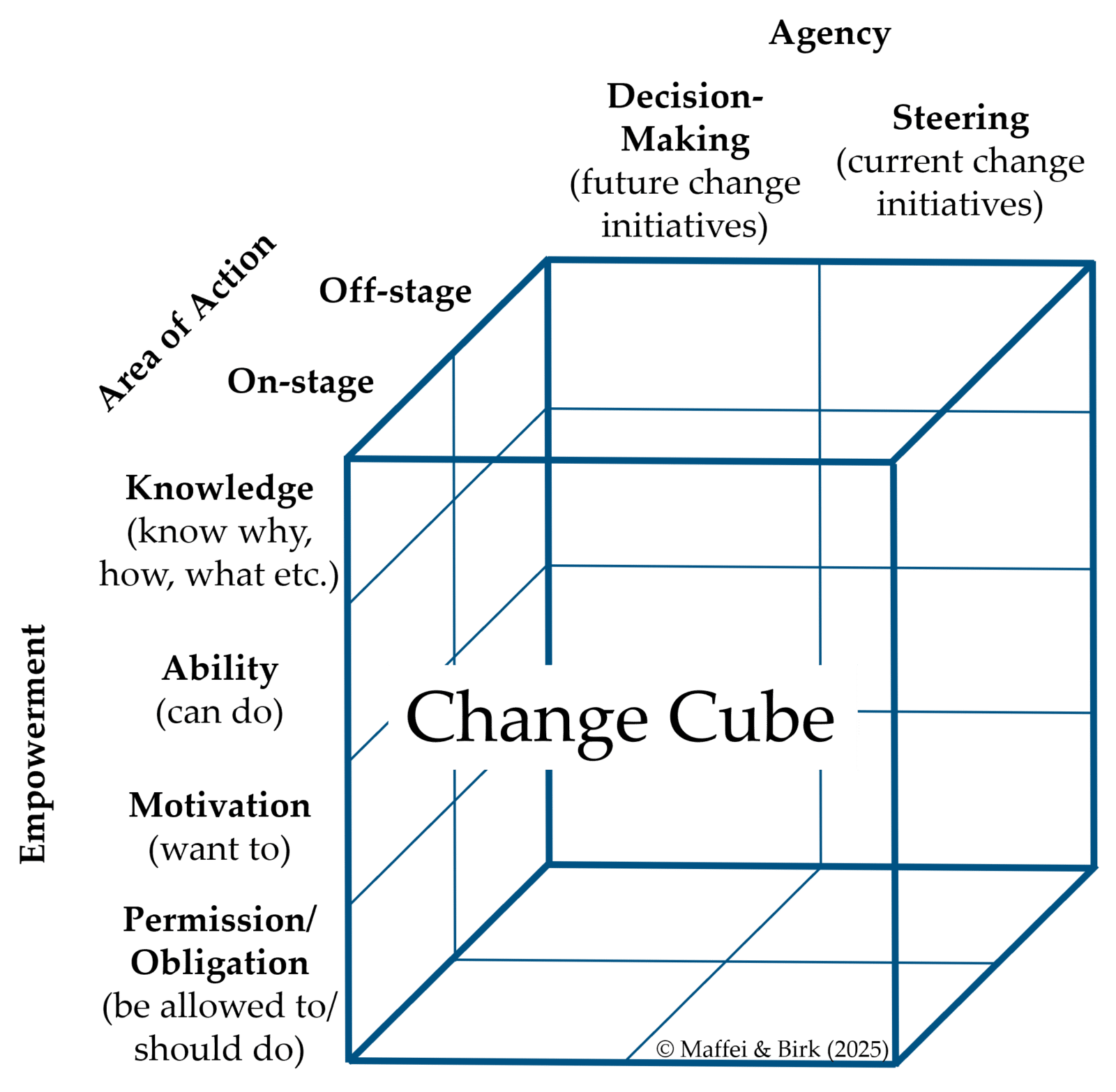Change Cube
Identifying And Overcoming Change-Barriers
The Change Cube (Maffei & Birk, 2025) provides a structured approach to identifying and overcoming change-barriers.

The Change Cube (Maffei & Birk, 2025)
Why Do Change Initiatives Fail?
The Change Cube (Maffei & Birk, 2025) highlights three key causes:
- One-sided area of action: The off-stage area is neglected, precisely where the actual implementation takes place
- Poor empowerment: A lack of knowledge, ability, motivation, or permission/obligation creates uncertainty among those involved.
- Narrow agency: Instability is not managed effectively: even the best change initiative will fail if too many changes lead to change fatigue.
The Change Cube helps target these three decisive levers to identify and overcome change barriers early, successfully implementing change initiatives.
The following key aspects emphasize its significance:
Addressing the Root Causes of Resistance
By specifically addressing the four main causes of resistance to change (lack of knowledge, lack of ability, lack of motivation, and lack of permission/obligation), organizations create favorable conditions to prevent resistance from arising in the first place.
Considering the Dual Nature of Change
Change happens both on-stage (e.g., strategies, concepts, meetings) and off-stage (where the actual implementation takes place and sociocultural patterns shape behavior). Traditional change management often focuses on the visible, on-stage aspects while neglecting the critical but less obvious off-stage dynamics.
Managing Change Fatigue
Frequent and overlapping change initiatives can lead to exhaustion, low engagement, and high turnover. The Change Cube emphasizes the need for a balanced approach to avoid excessive strain (instability) and ensure an optimal level of organizational stability.
Promoting Strategic Decision-Making
By focusing on the three dimensions agency, area of action, and empowerment, organizations can develop a roadmap that aligns leadership actions with employees' needs and wants, fostering an adaptable, change-ready culture.
Enhancing the Success Rates of Change Initiatives
Given that 70% of change initiatives fail to achieve their goals, the Change Cube enables leaders to proactively manage challenges to significantly increase the success rate of change or transformation efforts.
«In other words, if we address these three dimensions, change initiatives are highly likely to achieve their goals.» Maffei & Birk (2025)
Next Step
Facing challenges in practice? We're happy to support you! All our services contribute directly to the three accounts of the Change Cube.
